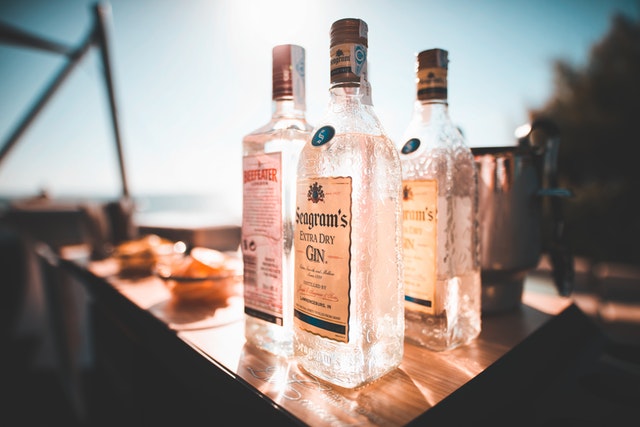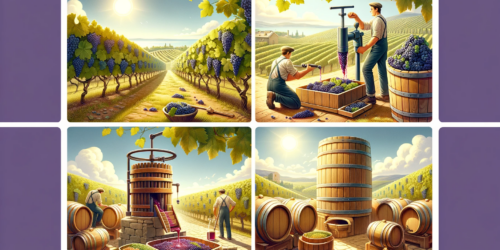Drinkers have been enjoying the distinctive flavor of gin since medieval times. That’s the earliest known date for the Dutch liquor called Genever, made from distilled wine flavored with juniper berries, which gave the drink its name. It didn’t take long for this new taste to draw an enthusiastic following. Soon there was a new drink on the block in England – their own version of the drink, known as gin.
Gin’s alchemical origins
Then as now, drink recipes were complex productions created by talented artisans whose skills bordered on alchemy. It’s perhaps not surprising that gin’s unique, astringent taste gained recognition as a herbal remedy. It’s now known that juniper has many beneficial attributes, including bactericidal qualities, and so perhaps those early producers and drinkers had a good idea of some of its secrets. It’s also likely to be the drink behind the legendary “Dutch courage” that provided the stimulus for 16th century soldiers to engage on the battlefield.
In later times, gin was seen as the ideal flavor to encourage the British military to take their vital supplies of anti-malarial quinine; and so gin and tonic, the classic drink of the British Empire, was born.
Gin’s now the thing for modern palates
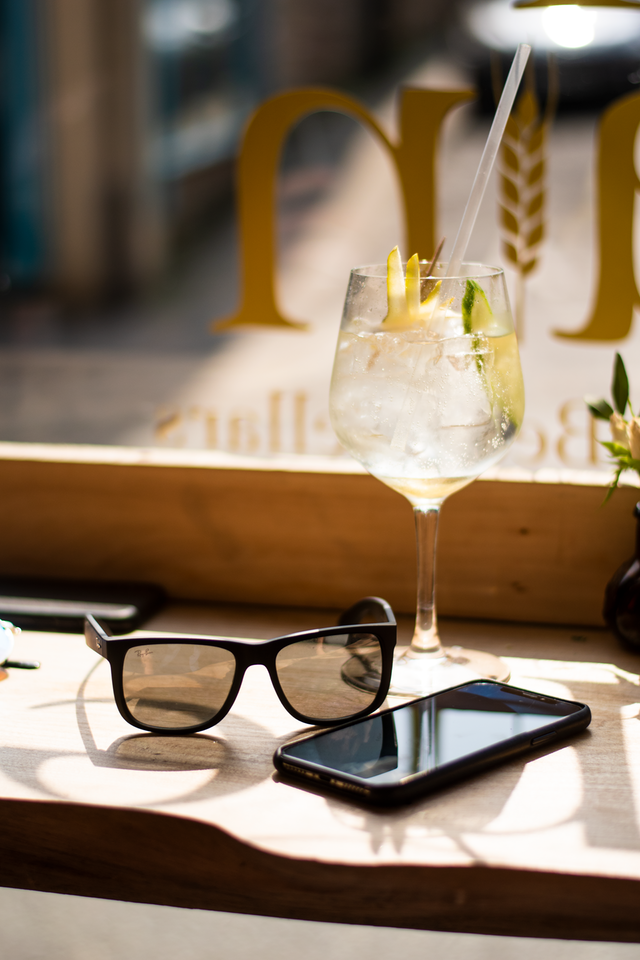 Recently, though, gin has ditched its Colonel Blimp image and has become one of the hippest drinks around. Gin has even started to rival whisky in its own homeland Scotland, with a range of innovative new producers bringing out some novel and ingenious flavors to lure away Scotch drinkers from their favorite malts. Juniper is an evergreen which grows well in the Scottish climate, particularly in the pine forests which have been planted widely across the country.
Recently, though, gin has ditched its Colonel Blimp image and has become one of the hippest drinks around. Gin has even started to rival whisky in its own homeland Scotland, with a range of innovative new producers bringing out some novel and ingenious flavors to lure away Scotch drinkers from their favorite malts. Juniper is an evergreen which grows well in the Scottish climate, particularly in the pine forests which have been planted widely across the country.
What gives gin its flavor?
What is gin made from? It’s specifically the juniper berries – in fact, the seed cone of the juniper – that makes it gin as we’ve discovered; but what else is involved in the creation of this historic drink? Other botanicals – parts of plants – are used in addition to the juniper to add to the flavor. Angelica, coriander, cardamom, and also orange or lemon peel are often used. Other popular gin botanicals include cassia, cinnamon and orris root, which is the root of the iris flower. Every gin maker has their own recipe or recipes, giving their drink a distinctive flavor that appeals to their fans. The essential oils in the citrus peel all add to the rich taste sensation. Check out our review on the best rhubarb gin.
Gin also needs alcohol, of course, and this is usually grain spirit. The method of production of the spirit is one of the key factors in the different types of gin that are available. So how is gin made?
Extracting the essential oils
The most basic process is steeping, in which the juniper is put into the grain spirit along with other botanicals. The grain might be cereal grain, made from either wheat or barley, or alternatively it can be produced from grapes or molasses, this being a by-product of sugar production. Steeping the botanicals can last up to two days but usually takes less time. The spirit can then be redistilled and that infuses the spirit with the flavour of the botanicals. A less costly way of doing this is simply to infuse the botanicals and remove any solids, then dilute the resulting flavored gin with water.
The most important thing is to draw as much of the essential oils from the botanicals as possible and to use as neutral a base spirit as is available. The smell and taste of the botanicals should be what gives the drink its distinctive flavor, not the alcohol.
Another way of extracting all the flavor from botanicals is to suspend them in baskets within the still itself above the base spirit. The spirit is then boiled and it’s the vapor from this boiling spirit that infuses the botanicals and extracts the flavorsome essential oils from them. The process is known as vapor distillation.
Talented distillers use a combination of both processes, sometimes holding back certain ingredients until the later stages of the operation to make sure their flavor gets the chance to shine.
Distilling gin – what’s involved?
Since distilling is the most important part of the production process, it’s worth looking at what this involves. What does it mean to distill something? Distillation is used to purify water, and it’s also used to produce pure spirits with a high alcohol content. The basic process is very simple. The liquor, often fermented alcohol such as wine, as was the case with the original Genever, is boiled in a pot still. This causes it to turn to vapor, which moves along a tube called a lyne arm in a special vessel, a condenser, which is cooled by either water or air. The distilled spirit (now known as the “distillate”) is then collected in the collector vessel at the base of the condenser.
Drinkers have always enjoyed their gin so much that they’ve created novel ways to ensure a supply of their favorite tipple. During the Prohibition Era in the USA, making gin in bathtubs became popular; and when people went to house parties they happily indulged in “bathtub gin” produced by their hosts. This term is sometimes applied to “compound gin” which is simply botanicals steeped in a base spirit which don’t undergo a redistillation process.
Different types of gin
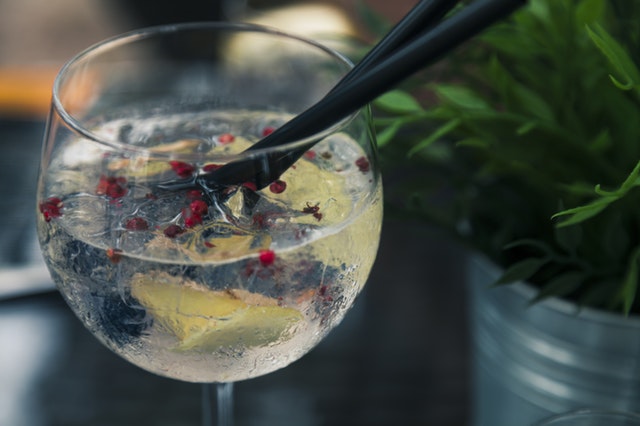 You’re perhaps familiar with the different types of gin, such as London Dry Gin which uses pure grain spirit and natural botanicals. Its pure, clean taste has made it the world’s most popular gin. Some of these gins use licorice which gives a hint of sweetness to the taste, but mostly it’s the dryness of the gin that people love. Despite the name, London gins don’t have to be made in London. They do, however have to have a low sugar content per liter.
You’re perhaps familiar with the different types of gin, such as London Dry Gin which uses pure grain spirit and natural botanicals. Its pure, clean taste has made it the world’s most popular gin. Some of these gins use licorice which gives a hint of sweetness to the taste, but mostly it’s the dryness of the gin that people love. Despite the name, London gins don’t have to be made in London. They do, however have to have a low sugar content per liter.
Plymouth gin is not so well known as London, but it has long-standing associations with the British navy whose love of high-strength alcohol (and equally high-strength tobacco) was legendary. It’s known as a very dry gin, with more spice in the flavor than the London dry gins.
The two traditional gins are Genever, which has been going through a revival lately, and Old Tom, a sweeter tasting gin that incorporates licorice to give it more of a touch of earthy sweetness that appeals to drinkers of malts. Genever is darker coloured and incorporates warming botanicals such as ginger and clove – delicious as a winter warmer.
The USA took up the gin challenge with its own variation, American gin – sometimes known as Aviation gin, or Aviation American gin. As well as some better known ingredients, the drink also includes anise and Indian Sarsaparilla.
And of course, now the growth of non alcoholic gins have taken everyone by surprise. Check out our guide on the best non alcoholic gins.
Homemade gin – is it difficult to make?
Once the gin enthusiast has an idea of the basics of how to make gin, it’s a small step to make a delicious batch of personalized gin at home – and there’s no need for a still.
Start off with a good base spirit. A quality commercially produced vodka is best. You’ll also need a large jar or bottle – a wide necked jar that can be sealed is a good choice. For the standard size bottle of 750 ml, two tablespoons of juniper would be required. After that, it’s a question of which botanicals appeal to your palate – do you like a spicy drink, or lighter, more fragrant floral one? Include some lemon or orange peel, with the pith scraped away as it’s too bitter to help with the taste.
Simply put the ingredients into the jar, top up with the vodka and leave to steep for a day in a dark cool place. (It’s a good idea to shake the jar from time to time to make sure everything infuses properly.) Carry on for another day or so, checking out the flavor from time to time. Then strain the liquid with a paper filter and let it sit again; another straining session or two and your gin will be ready to try properly!
You can make flavored gins with fruit too, using a commercially produced gin and steeping fruit or berries in it, along with some sugar. Then of course, there’s the classic sloe gin, a superb drink made from ripe sloes that is especially popular as a winter drink. Use the same process as above, 500g of sloes to 250g of sugar, but let the fruit and sugar sit for longer than with botanicals – several weeks is not unusual.
Experiment with small batches and flavors that you love.
To distill or not to distill?
In many parts of the world including the UK and USA distilling is illegal without a license. However, other countries, such as New Zealand, permit distilling for home use but not for commercial resale.
A surprising number of countries across the world have traditions of distilling spirits using both botanicals and fruit for flavouring. These are not specifically gins though some of the ingredients are familiar to gin drinkers. In countries with a tradition of wine making, a mash of grape skins and other leftovers is distilled to create a base spirit.
Now the important bit – the taste!
How would you answer a friend who asked “what does gin taste like?” Not all gins are the same. It depends on the ingredients. As has been noted, every producer has their own secrets that they don’t indulge to competitors.
Gin is often described as “flavored vodka” but that’s overly simplistic. The quality of the flavor will vary according to the skill of the producer and the quality of the base spirit that is used to produce it.
The classic response to the question is that gin tastes “like pine” or like “Christmas trees” due to the berries of the evergreen juniper. However, there’s much, much more to the taste. The flavors of gin can be subtle and herb like or fragrant and flowery. Think of a gin that has licorice as an ingredient; and now one that has lavender. The blending of the various botanicals is the x-factor in the production of gin.
Mixing it
Then there’s the issue of how the drinker enjoys a drink. Gins have long been used as a base for aperatifs and cocktails. The classic Martini is 6 parts gin to 1 part vermouth with a touch of lemon skin oil and garnished with an olive. It should be stirred and not shaken, whatever James Bond OO7 prefers. Bond’s creator, Ian Fleming created a new take on the classic by adding vodka to the gin and vermouth standard. A case of gilding the lily, perhaps?
The Italian Negroni is a quick and easy to make favorite, requiring 25ml each of gin, vermouth and Campari, over ice with a zest of orange fresh on top.
Gin shows its sharp and astringent side with the classic tonic water, both with and without Angostura bitters, perfect for summer evenings. Then in winter, a fruit gin punch with some hot water, cinnamon, lemon and a taste of sugar shows how versatile this drink is.
Legendary gin
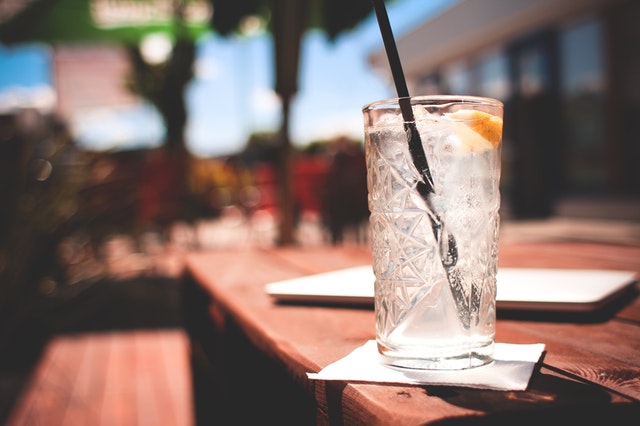
Gin is now celebrated with its own day in the USA. April 9th 2019 will be National Gin and Tonic Day.
F. Scott Fitzgerald would probably approve, though his own choice was the famous Gin Rickey, a simple and effective summer cocktail with gin, lime, club soda and ice. Gin’s long been favored by the establishment, including Queen Elizabeth II. Frank Sinatra enjoyed Martinis with a substantial amount of gin to Vermouth; and allegedly best-selling international author J.K. Rowling’s tipple is a classic G&T. There are few drinks that can cross the boundaries as successfully as gin, especially now that a whole new generation of drinkers is coming to discover – and develop – fresh new tastes in gin.
The moral of the story is, go and grab your favorite gin glass and make yourself a G&T, or a Martini, or a Gin Fizz or whatever works for you, sit back and relax!

